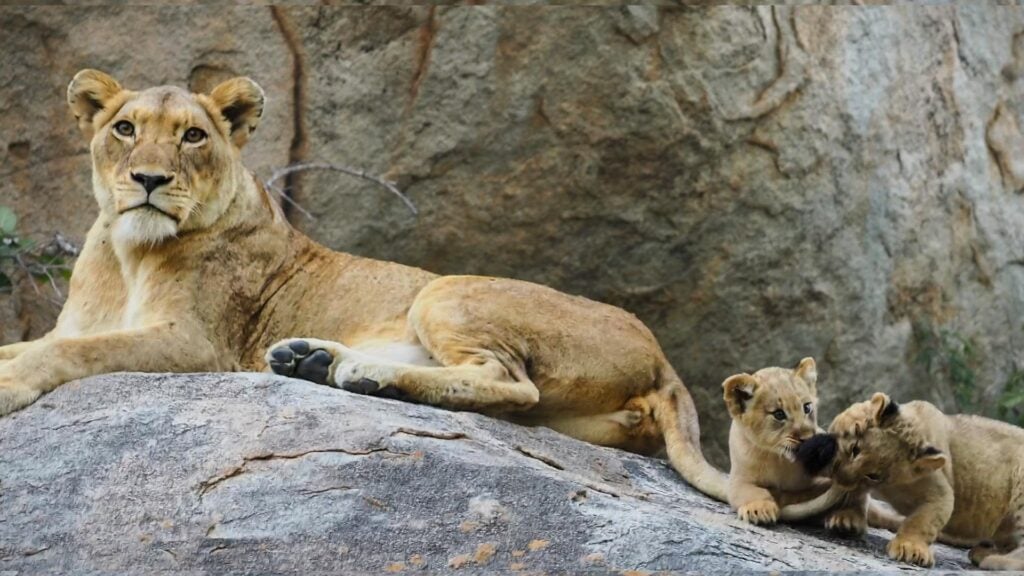The mother lioness kept a rather serious demeanor as the two little ones tussled over her tail. Her cubs meant business, but she chose to keep the peace, understanding that her babies’ play was important for their development.
It was a moment many human mothers can relate to and a reminder that there are many common experiences moms share, across species.
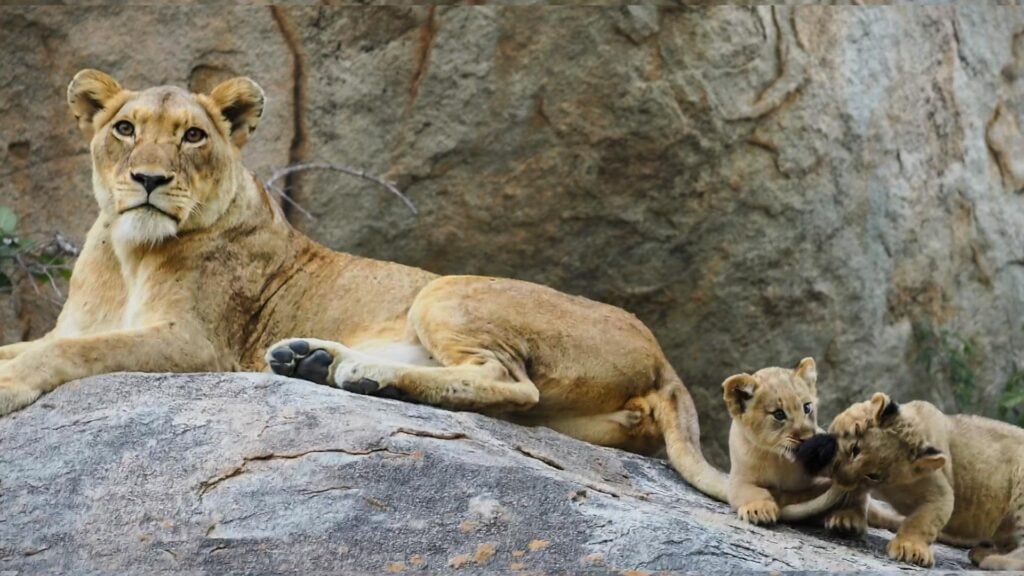
Cubs wrestle over tail’s tuft
The cubs spotted the tuft at the end of her tail, and beheld it with a visible measure of curiosity. This meant a lot of tugging and wrestling. Their mother sat quite solemnly as the playful interlude unfolded.
When she turned her head, she wore a clear expression of, “Oh bother.” However, she did nothing to interrupt their playtime… such was her mother’s heart. She tolerated their play with remarkable patience.
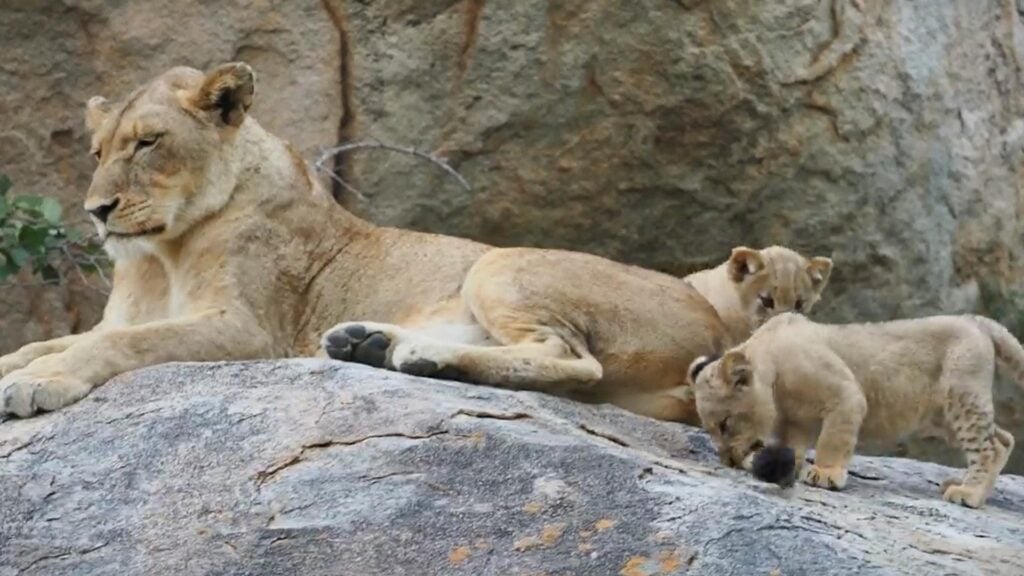
A lion’s tail is more than a playful toy. It is also an important tool. Lions use their tails to communicate, flicking them to signal irritation or twitching them during stalking to maintain balance.
For these cubs, however, their mother’s tail presented a moving challenge, much like the movements of prey that they would one day pursue across the plains.

This kind of play by cubs is not unusual. Cubs often play with the adult lions’ tails. By grappling with their parents’ tails, the cubs learn coordination, timing, and the strength of their bites and claws.
Their mock battles prepare them for the real hunts to come, where precision and teamwork will be essential to success.
Get our Best Sightings as they Come in

Interestingly, lion cubs are born with spots which help them blend into their surroundings. These rosettes gradually fade as they grow older, although faint patterns often remain on their legs and belly. The spots provide camouflage during the most vulnerable stages of their lives.
The importance of play
While they are still small and playful, the cubs spend much of their time rolling, tumbling, and engaging in mock chases. Scientists believe that play also strengthens social bonds within the pride. It fosters cooperation and reduces aggression as the cubs grow into adulthood.
These little cubs demonstrated just how exuberant this educational play can be!
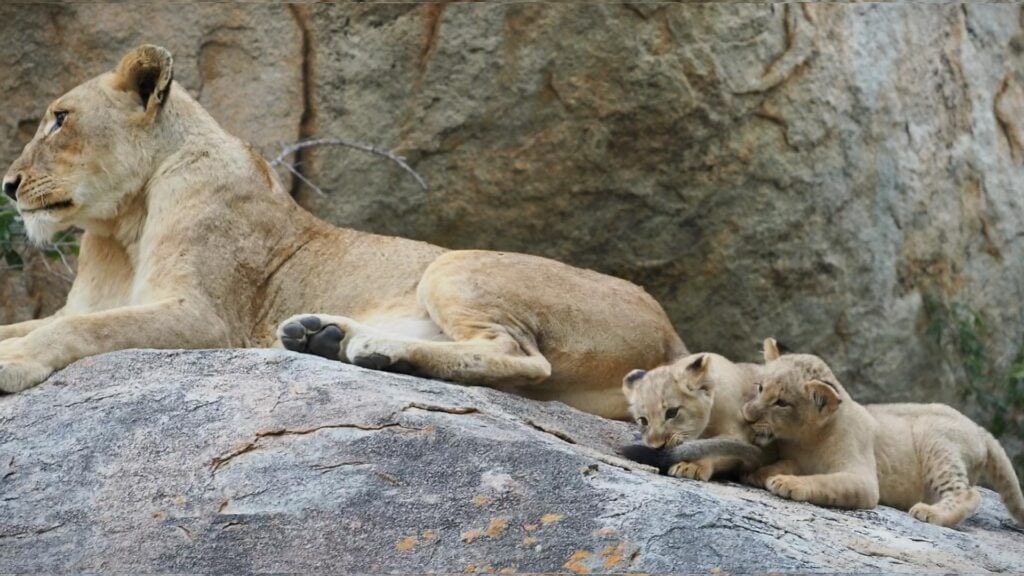
Mother lioness demonstrates commendable patience
Being a mother lion is a demanding role. A mother lioness must hunt often enough to provide for herself and her young, sometimes bringing down prey much larger than she is.
The mother must also remain vigilant. This lioness, though resting, continued to be attentive to her environment. Her ears twitched to catch distant sounds, her nose tested the air for scents of danger, and her eyes remained half-open, scanning her surroundings.
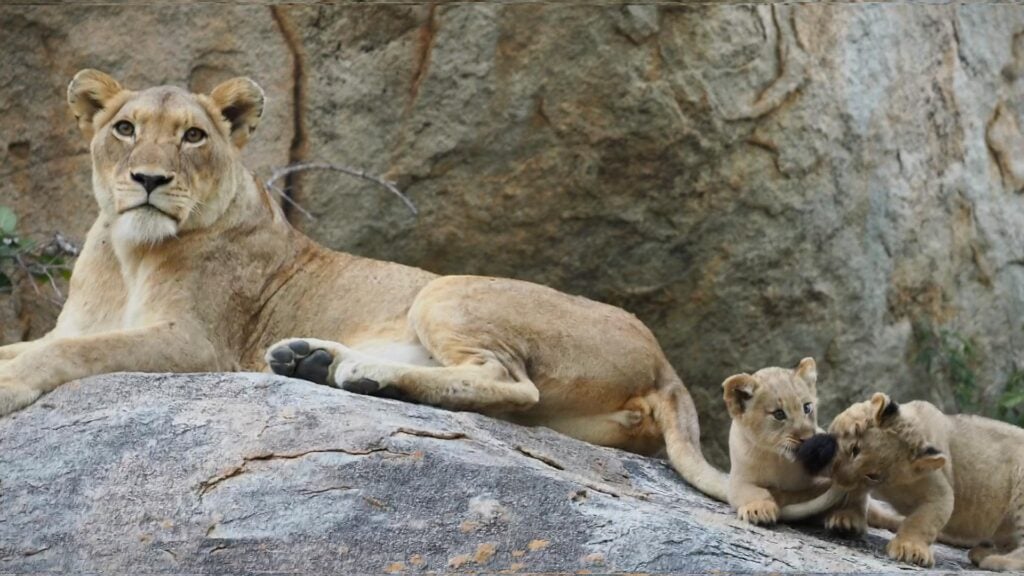
Lions have many impressive attributes. They can weigh up to 180kg in the case of large males, while females are usually closer to 120kg. Despite being smaller, the lionesses are the primary hunters, using their speed and coordination to take down animals such as wildebeest, zebras, and buffalo.
At full speed, a lioness can reach around 60km/h, though only for short bursts. This means the success of a hunt relies more on strategy, ambush, and teamwork than on endurance.
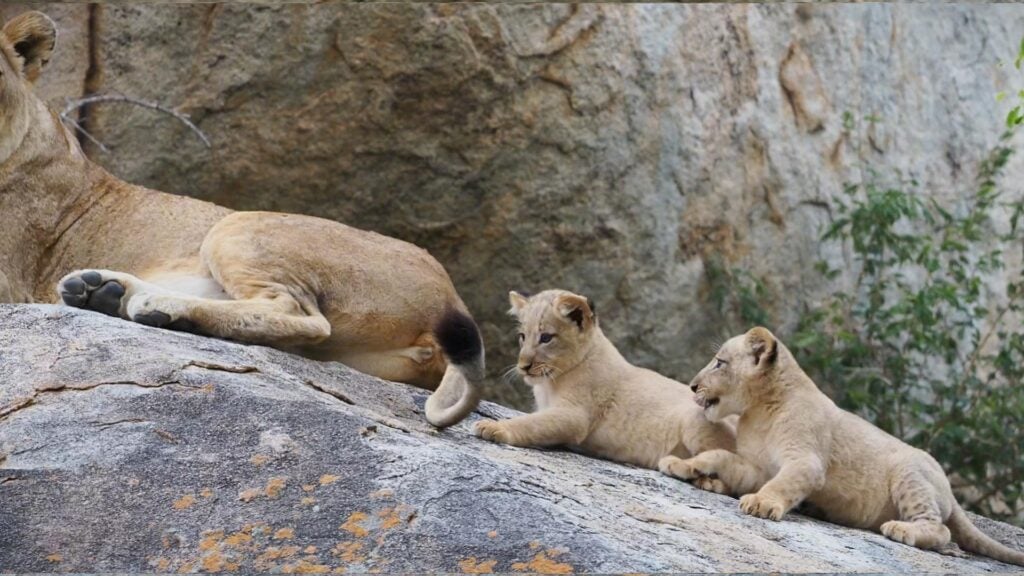
However, in spite of these many notable qualities, one of the most impressive things about lions is their parenting skills. This lioness showed she had what it took to be a superb mother… patience, composure, vigilance and a love for her cubs.











































































































